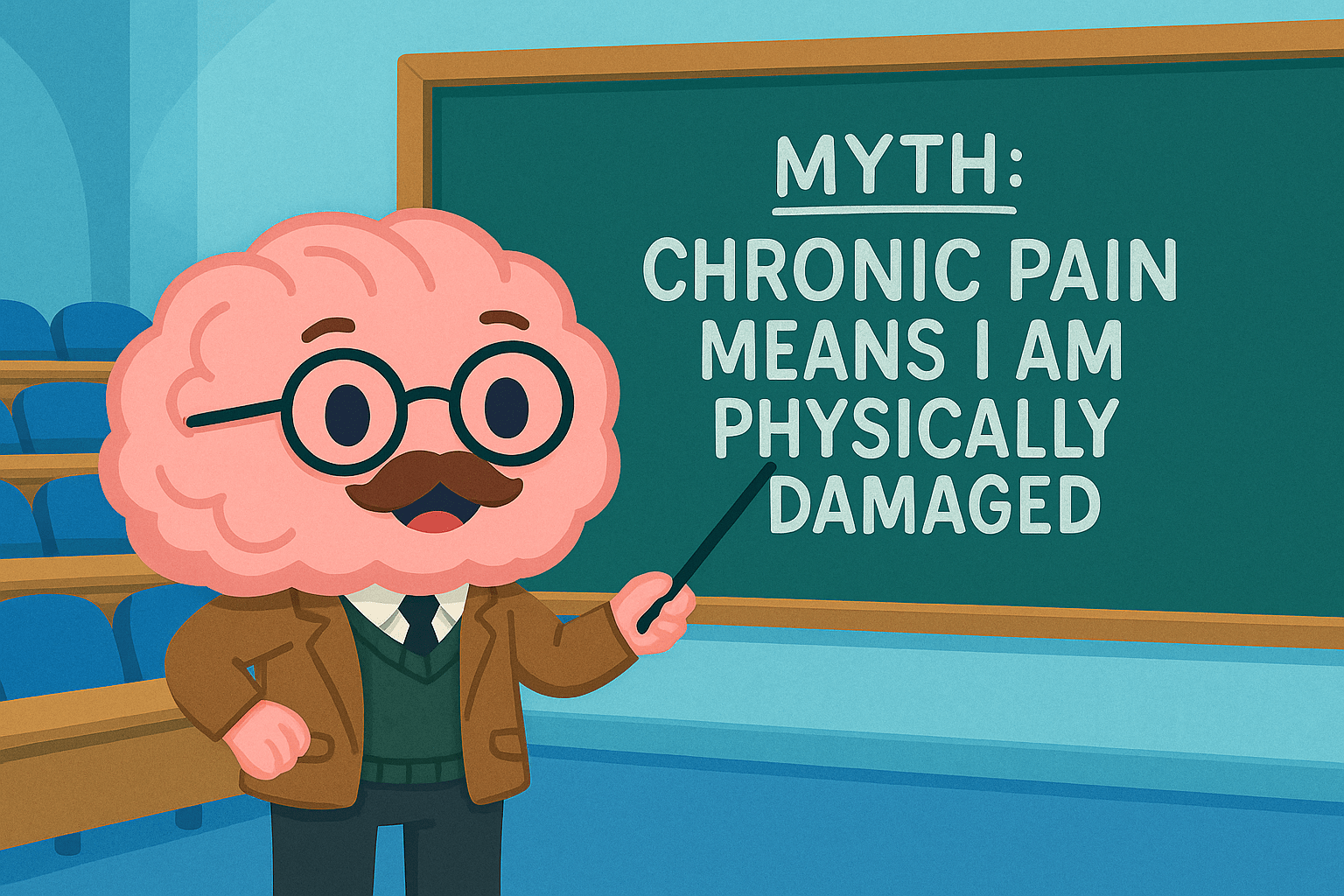When it comes to chronic pain, believing that your body is broken, that your options are limited, or that healing isn’t possible is fairly common misconception. Let’s debunk a few of the most common chronic pain myths so you can start seeing your symptoms—and your recovery—in a new light.
Most common Chronic Pain Myths
Myth #1: Chronic Pain Means I Am Physically Damaged
It’s easy to assume that persistent pain must mean ongoing tissue damage—in fact, this is biological hardwiring. But research tells a different story.
In fact, many people with no pain at all have disc bulges, protrusions, herniations, arthritis, or other “abnormalities” on scans. These are often incidental findings and are simply normal signs of aging (Jensen et al., 1994).
Pain is a protective signal from the brain, not always a reflection of structural damage. This means you can experience real pain without anything being “wrong” in your body.
In the same vein, the human body is incredibly resilient and capable of healing. In 60-80% of patients, herniated discs are naturally resorbed by the spine within 1 year (Zhong et al., 2017).
Myth #2: If Treatment Didn’t Work, You’re Out of Options
Many patients try surgery, injections, ablations, medications, or physical therapy with little to no lasting relief. It’s not because the pain is untreatable—it’s because these treatments don’t target the root cause.
If your pain is neuroplastic, it requires a brain-based approach. Using physical treatments for neuroplastic pain is like using antibiotics to treat a virus. Antibiotics won’t work because they treat bacterial infections, not viral infections. Just as you would need the correct medicine to treat a specific infection, you need the right treatment for your specific pain: Pain Reprocessing Therapy.
Read: What Is Pain Reprocessing Therapy?
Myth #3: “It’s All in Your Head”
When people hear that their pain might be brain-generated, they often feel dismissed, invalidated, or blamed for “making up” their symptoms. But neuroplastic pain is 100% real, and all pain is generated by the brain, regardless of whether or not it reflects physical damage.
Understanding this can be empowering and help patients target the correct treatments.
Myth #4: Recovery Means Eliminating Pain Immediately
Recovery isn’t always linear. It doesn’t mean every flare disappears right away. Instead, it starts with responding to pain differently, so the brain doesn’t interpret it as a threat.
That’s where tools like mindfulness, safety reappraisal, and somatic tracking come in: gentle, curiosity-based ways to observe symptoms without fear.
Try It: Somatic Tracking 101
Each time you respond with calm curiosity instead of panic, you’re helping your brain unlearn the pain response!
Final Thought
These myths can feel persistent, but they’re not permanent. The more you understand your pain, the more power you have to change it.
You’re not broken, and you’re not out of options.
